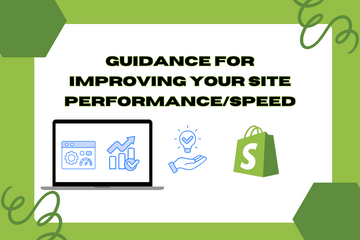Get result-oriented guidance on improving site loading speed and overall performance.
As a Shopify expert, I often encounter store owners who seek to enhance their site's performance and speed. Optimizing your site's loading speed is crucial for providing a seamless user experience, improving search engine rankings, and increasing conversions. Our result-oriented guidance involves a comprehensive site audit to analyze page loading speed, image size, and apps that may be slowing down your site.
Why Improve Site Performance/Speed?
Improving your site's performance and speed offers several benefits that can significantly enhance user experience and business outcomes. Here are some key advantages:
Enhance User Experience
A fast-loading site provides a better user experience, reducing bounce rates and increasing the likelihood of visitors staying on your site longer and making a purchase.
Boost SEO Rankings
Search engines like Google prioritize fast-loading sites, which can improve your search engine rankings and increase organic traffic to your store.
Increase Conversions
Faster page loading times lead to higher conversion rates. Customers are more likely to complete a purchase on a site that loads quickly and efficiently.
How to Improve Site Performance/Speed
Here are simple steps to improve your Shopify store's performance and speed:
Step 1: Conduct a Site Audit
We start with a thorough site audit to identify areas that need improvement. This includes analyzing page loading speed, image sizes, and installed apps.
Step 2: Optimize Page Loading Speed
We use tools like Google PageSpeed Insights to measure your site's loading speed and identify factors slowing it down. We address these issues by minimizing code, leveraging browser caching, and improving server response times.
Step 3: Resize and Compress Images
Large images can significantly slow down your site. We resize and compress images without compromising quality to ensure they load quickly.
Step 4: Review and Optimize Apps
Installed apps can sometimes slow down your site. We review all installed apps and remove or replace those that negatively impact performance.
Step 5: Implement Lazy Loading
Lazy loading ensures that images and other media load only when they come into the user's viewport, reducing initial page load times.
Step 6: Monitor Performance
After implementing changes, we continuously monitor your site's performance to ensure improvements are maintained and identify any new issues that may arise.
Conclusion
Improving your Shopify store's performance and speed is essential for providing an exceptional user experience, boosting SEO rankings, and increasing conversions. Through a comprehensive site audit and targeted optimizations, you can achieve faster loading times and better overall performance. As you continue to refine your Shopify store, leveraging expert guidance on performance improvements can significantly enhance your store's success and customer satisfaction.










